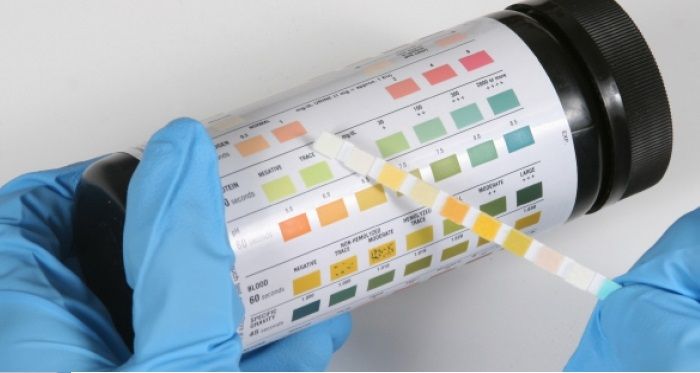If you’re a woman, chances are you’ve had at least one urinary tract infection (UTI) in your lifetime. UTIs are one of the most common infections, responsible for more than 7 million doctor visits a year in the U.S. They occur most often in young, sexually active women, but recur more frequently again after menopause. Men get them, too, though much less often.
Most UTIs are caused by bacteria (usually E. coli from feces) that make their way through the urethra—the tube that carries urine out of the body—into the bladder, where they multiply. This may result in a bladder infection called cystitis. Infrequently, bacteria migrate from the bladder to the kidneys, which can lead to a kidney infection (pyelonephritis), a more serious problem. In men, bacteria can also get into the prostate, causing prostatitis.
The signs of cystitis are a frequent and urgent need to urinate, accompanied by pain and burning. Your urine may be cloudy, even slightly tinged with blood. Additionally, you can experience some lower abdomen ache and not feel good at all. Fever is rarely associated with cystitis, but is typical with pyelonephritis and prostatitis.
Table of Contents
Are you at risk for UTIs?

Frequent intercourse, use of a diaphragm and/or spermicide, obesity, incontinence (urinary and fecal) or a bladder that doesn’t fully empty can all contribute to UTIs in women. You may be more susceptible if your mother had UTIs. If you’ve had several episodes, recurrences are likely. The increased risk in postmenopausal women is probably due to reduced estrogen, which has an effect on the quantity and types of bacteria living in the vagina and the area around the urethral opening. Compared to premenopausal women, older women tend to have lower levels of Lactobacillus, in particular. The pH of the vagina is lowered by these “good” bacteria, making it less favourable for E. coli and other “bad” bacteria, and thus help prevent their spread to the urinary tract.
Risk factors for men include having unprotected vaginal intercourse with a partner who has a UTI or unprotected anal sex. Men don’t get nearly as many UTIs as women perhaps because of the greater distance between the opening of the urethra and the anus. Plus, the urethra is much longer in men (making it harder for bacteria to migrate), and prostatic fluid has antibacterial properties. UTIs are frequently linked to prostate enlargement in older men.
People who have catheters placed in their urethras are very vulnerable to infections. Anatomical anomalies and kidney or bladder stones also raise risk in both men and women.
Testing for UTIs: a home advantage?
A simple dipstick urinalysis at the doctor’s office can help diagnose a UTI; the urine may also be cultured to see which specific organism is responsible for the infection and thus determine which antibiotic should be used to treat it. Urinary analgesics, such as phenazopyridine (Pyridium), can provide some immediate relief of symptoms but do not treat the infection.
There are also home tests, available over the counter at drugstores. According to a paper published in BMJ in 2010, self-diagnosis of cystitis by women with recurrent infections can be safe, convenient and accurate. The kits are inexpensive and easy—all you do is urinate on the strip and wait for the color change. Look for brands that check for both nitrite (produced by infectious bacteria) and white blood cells (present when there is an infection) in urine.
Your doctor may be able to prescribe treatment without your having to go to the office, based on home test results or your history of UTIs. However, if home test results are negative and you still have symptoms, you need to see your doctor. The test can produce false-negative results—or something else may be causing the symptoms, such as a vaginal infection or a sexually transmitted disease, which needs treatment. And if your symptoms continue after treatment, the bacteria causing the UTI may be resistant to the prescribed antibiotic, so you would also need to see your doctor.
Can you prevent UTIs?
There are no proven ways to keep UTIs at bay, but several steps are commonly recommended, including drinking plenty of fluids and not delaying urinating. Women are also advised to wipe from front to back to prevent bacteria from entering the urethra, and to cleanse their genital area before and after sex. If you frequently experience UTIs and use a spermicide or diaphragm, you may want to consider switching to a different method of birth control. For women who are especially prone to infections, doctors may prescribe a single dose of an antibiotic to use after intercourse or continuous low-dose antibiotics for several months—though a 2011 study published in the Archives of Internal Medicine found that daily use of these drugs increased antibiotic resistance. Vaginal estrogen may also be an option for postmenopausal women with recurrent UTIs.
Two possible preventives:
Cranberries: Proanthocyadins in cranberries may help keep bacteria from sticking to the lining of the urinary tract. A 2009 review by the independent Cochrane Collaboration found cranberry modestly efective for women with recurrent infections. But in 2011 a large, well-designed study published in Clinical Infectious Diseases found the juice no better than a placebo in reducing UTIs in young women. Fewer studies have looked at cranberries and UTI prevention in older people, but some research suggests they may benefit less. A common recommendation is to drink 10 to 16 ounces daily of cranberry cocktail (which has sugar added to combat its tartness), less if you buy undiluted unsweetened juice. Artificially sweetened cranberry drink has fewer calories. Cranberry supplements have been less tested, though a study in Current Bioactive Compounds found that capsules of whole cranberry powder reduced E. coli concentrations and decreased symptoms in younger women (18 to 40) with recurrent UTIs.
Probiotics: Lab research has shown that certain strains of Lactobacillus inhibit the growth of E. coli that can colonize in the urinary tract. And in a recent study in Clinical Infectious Diseases, Lactobacillus suppositories reduced UTIs in young women with recurrent infections. Though such studies are limited and inconclusive, a 2008 review in Clinical Therapeutics noted that the use of Lactobacillus probiotics for UTI prevention in women holds some promise.




